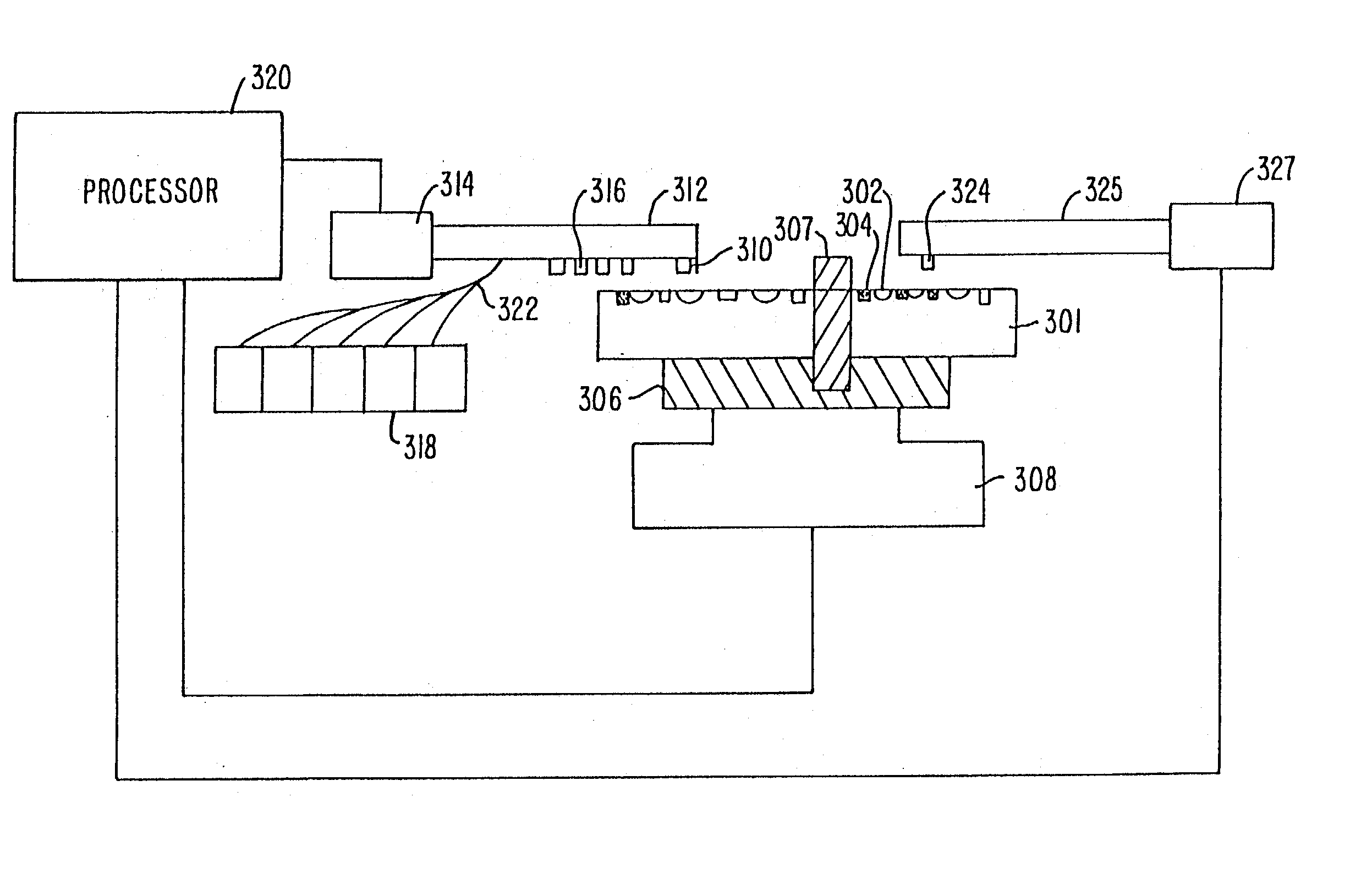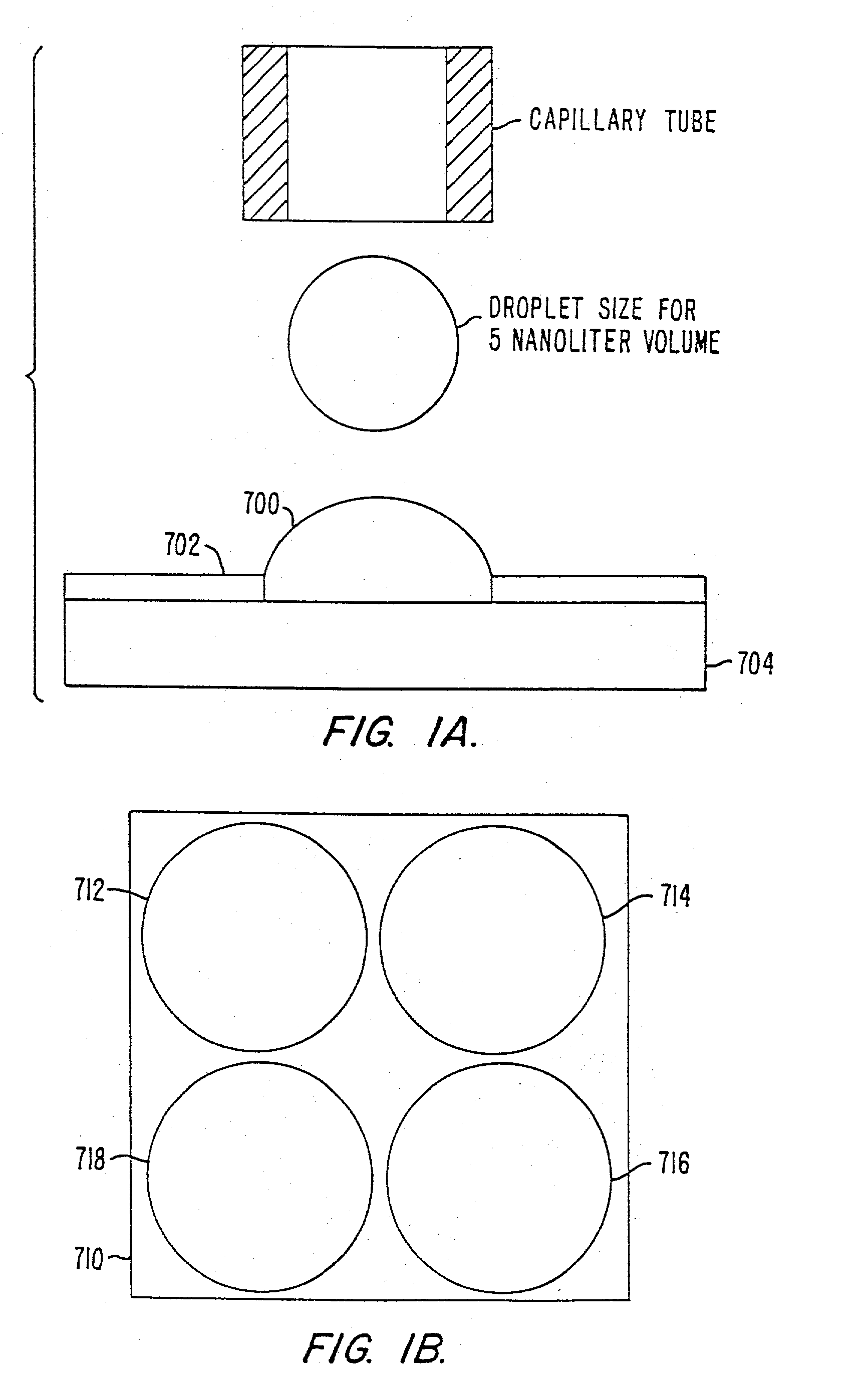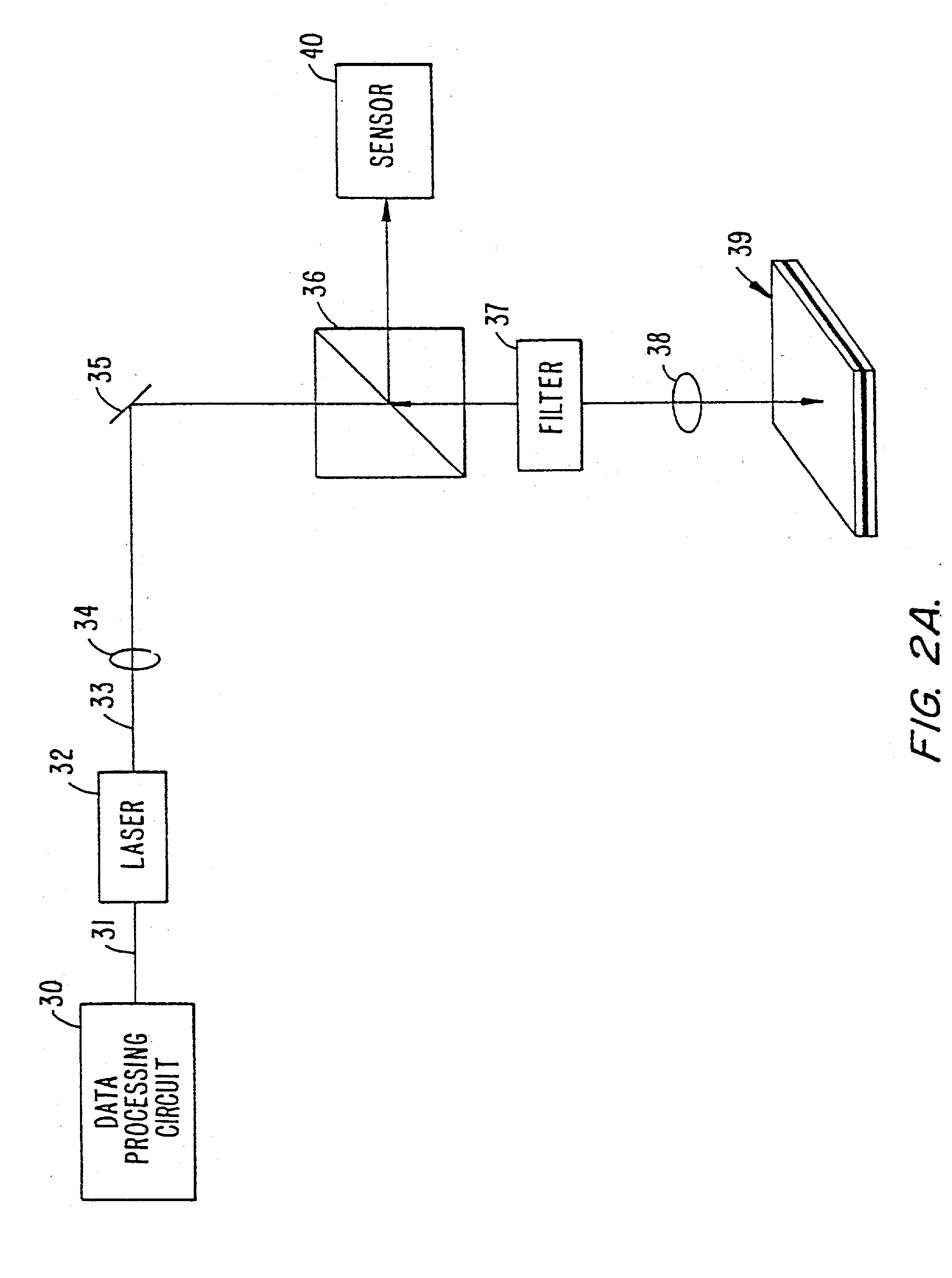Guided deposition in spatial arrays
a technology of spatial arrays and guided deposition, applied in the direction of analytical using chemical indicators, laboratory glassware, instruments, etc., can solve the problems of reducing the number of sequences of geysen et al. methods, the number of sequences must be limited, and the size of test samples to be minuscul
- Summary
- Abstract
- Description
- Claims
- Application Information
AI Technical Summary
Problems solved by technology
Method used
Image
Examples
Embodiment Construction
. Glossary II. Overview of the Invention III. Isolation of Reaction Areas A. Dimples or recesses B. Controlling the Wetting Angle IV. Moving the Dispenser with Respect to the Substrate A. Mapping the Frame of Reference B. Rotational Mechanisms V. Delivering the Reactant Solution VI. Conducting the Reactions VII. Example A. Apparatus B. Locating Desired Cells C. Accessing Selected Cells D. Depositing Reactants in Selected Cells E. Peptide Synthesis F. Imaging the Array VIII. Conclusion
[0024] I. Glossary
[0025] The following terms are intended to have the following general meanings as they are used herein:
[0026] 1. Substrate: A material having a rigid or semi-rigid surface. In many embodiments, at least one surface of the substrate will be substantially flat, although in some embodiments it may be desirable to provide dimples, wells, raised regions, etched trenches, or the like. According to other embodiments, small beads or pellets may be provided on the surface within dimples or on o...
PUM
| Property | Measurement | Unit |
|---|---|---|
| diameter | aaaaa | aaaaa |
| diameter | aaaaa | aaaaa |
| diameter | aaaaa | aaaaa |
Abstract
Description
Claims
Application Information
 Login to View More
Login to View More - R&D
- Intellectual Property
- Life Sciences
- Materials
- Tech Scout
- Unparalleled Data Quality
- Higher Quality Content
- 60% Fewer Hallucinations
Browse by: Latest US Patents, China's latest patents, Technical Efficacy Thesaurus, Application Domain, Technology Topic, Popular Technical Reports.
© 2025 PatSnap. All rights reserved.Legal|Privacy policy|Modern Slavery Act Transparency Statement|Sitemap|About US| Contact US: help@patsnap.com



